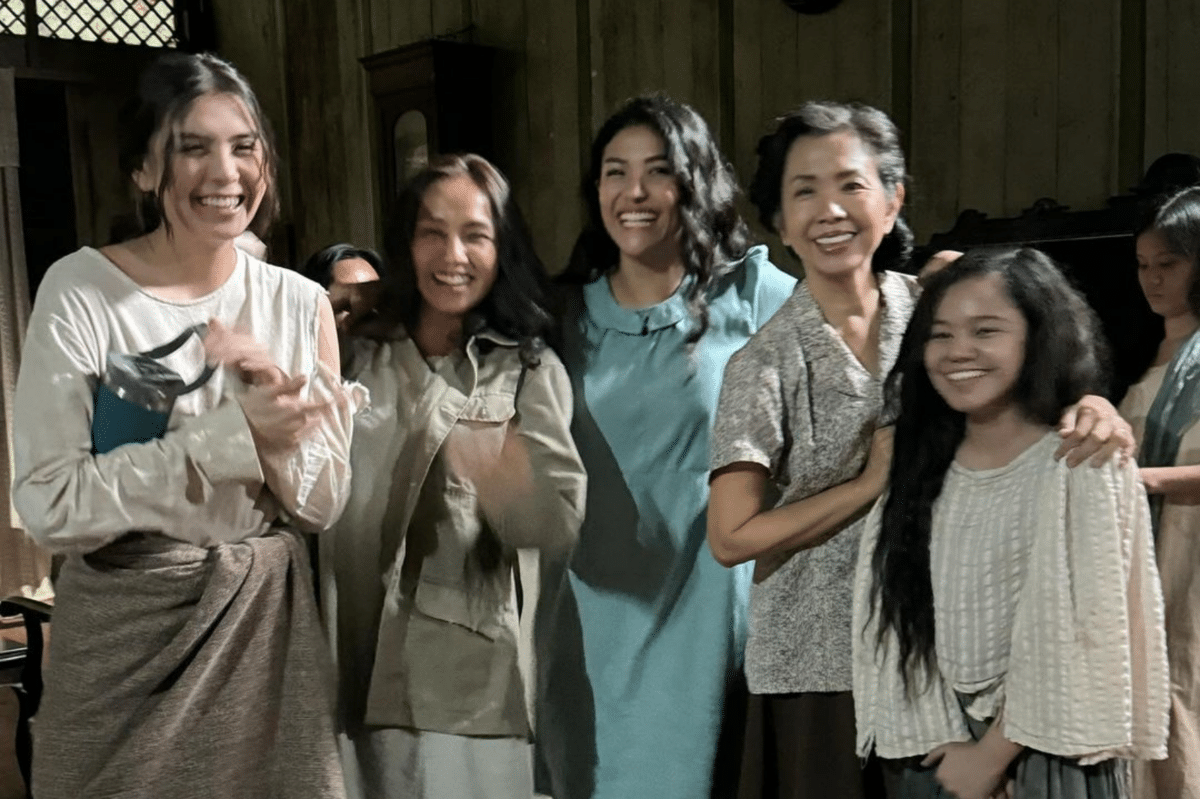
(From left) Ashley Ortega, Rochelle Pangilinan, Sanya Lopez, Isay Alvarez, and Angeli Nicole Sanoy. Image: Instagram/@rochellepangilinan
“Pulang Araw” creator Suzette Doctolero defended the rape scenes in the historical drama, saying it’s meant to expose the atrocities toward women during the Japanese occupation of the Philippines in the 1940s.
One of the focal scenes in “Pulang Araw” — which stars Alden Richards, Barbie Forteza, Sanya Lopez, and David Licauco — is the portrayal of comfort women who were subjected to rape and sexual abuse by Japanese armed forces.
Among the actresses involved in the scenes are Rochelle Pangilinan, Ashley Ortega, and Angeli Nicole Sanoy, while Lopez and Isay Alvarez’s characters were forced to endure their cries for help.
On X (formerly Twitter), Doctolero said the rape scenes were meant to show that women aren’t meant to be objects. In the show, the cries for help of the comfort women was meant to spark calls for justice, which remained elusive after several decades.
“The rape of comfort women ng ‘Pulang Araw’ was not shown just for the showrunners to say that women are just a plaything. The scenes show their cry for justice and respect for their womanhood and dignity, and a call for women empowerment,” she said in Filipino in response to a netizen’s comment.
Ang rape sa mga comfort women ng Pulang Araw ay hindi ipinakita para sabihing ang mga babae ay bagay lang, na pwedeng paglaruan. Sumisigaw ng katarungan at pagrespeto sa dangal at dignidad ang mga eksena, ito ay para sa hustisya at women empowerment. Sagot ito sa isang comment.
— Suzette S. Doctolero (@SuziDoctolero) October 18, 2024
In a follow-up post, Doctolero said the scenes aren’t meant to put fellow women down, and instead, spark anger for what comfort women went through.
“We do not show these rape scenes to portray women as toys or to make viewers horny. War is cruel especially on women, that’s the point of these scenes. I’m not going to create scenes that would put fellow women down,” she said.
We do not show these rape scenes para paglaruan ang babae, o pangpa horny sa ilang malilibog. Awa, galit, at iparamdam kung gano kalupit sa mga babae ang digmaan, iyan ang punto so hindi iyan magkapareho. Hindi ako gagawa ng eksenang magpapababa sa kapwa ko babae.
— Suzette S. Doctolero (@SuziDoctolero) October 18, 2024
Richards previously said at a press conference that the World War 2 setting of “Pulang Araw” is meant to show the Philippines’ tragic journey toward freedom, noting how the war portrays the “hellish experiences” that Filipinos went through.